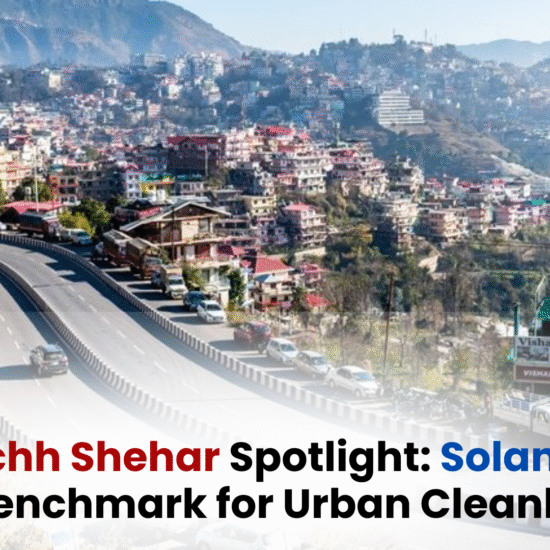RAJA KHAS: Himachal’s First Solar Model Village Under PM SURYA GHAR YOJANA
Raja Khas, a small village in the Indora sub-division of Kangra district, Himachal Pradesh, has achieved a pioneering milestone by becoming the state’s first Solar Model Village. This recognition marks a significant step toward India’s transition to clean and renewable energy, aligning with national goals for sustainability and energy self-reliance.

A Model for Solar Adoption
The transformation of Raja Khas is part of the PM Surya Ghar: Muft Bijli Yojana, a centrally sponsored scheme launched by Prime Minister Narendra Modi on February 15, 2024. The village stood out among 43 shortlisted villages in Kangra district, following a six-month competition evaluating solar installation performance and adoption levels. Raja Khas emerged as the top-performing village, showcasing exemplary community participation and implementation efficiency.
Scheme Implementation Framework
The implementation of the scheme in Himachal Pradesh is being managed by the Himachal Pradesh State Electricity Board Ltd (HPSEBL), while Himurja—the state’s designated renewable energy agency—is acting as the nodal agency for monitoring and evaluation. Himurja, established in 1989, has a long-standing mandate to promote renewable energy solutions and energy security in the region. With financial backing from both the Ministry of New and Renewable Energy (MNRE) and the state government, Himurja plays a pivotal role in disseminating solar technologies, supporting R&D, and enabling private sector investment in the hydropower sector.
Key Features of the PM Surya Ghar Yojana
This ambitious scheme aims to provide free electricity to 1 crore households across India by subsidising the cost of installing rooftop solar panels. The scheme offers a subsidy of up to 40% of the installation cost, making solar energy more accessible to the masses. The expected outcomes include:
- Free electricity for enrolled households.
- Significant cost savings for the government—estimated at Rs. 75,000 crore annually.
- Boost in renewable energy use, reducing dependency on fossil fuels.
- Lower carbon emissions, supporting national and international climate commitments.
Himachal Pradesh’s Vision: Becoming a “Green State” by 2025
The state government has committed to transforming Himachal Pradesh into a Green State by 2025, with a strong emphasis on:
- Widespread adoption of electric vehicles (EVs)
- Expansion of solar power infrastructure
- Promotion of sustainable tourism
- Encouragement of eco-friendly practices across sectors
Importance of the Green State Initiative
- Environmental Conservation
- Helps preserve fragile Himalayan ecosystems by reducing fossil fuel use and pollution.
- Energy Independence
- Reduces reliance on thermal power and imported fuel by promoting solar and hydropower.
- Economic Efficiency
- Decreases public expenditure on electricity subsidies and imports; generates green jobs in renewable energy sectors.
- Public Health Benefits
- Cleaner air and reduced emissions contribute to improved health outcomes for residents.
- National and Global Leadership
- Strengthens India’s commitment to global climate agreements such as the Paris Accord and promotes Himachal Pradesh as a model for sustainable development.
- Rural Empowerment
- Decentralised solar energy access improves quality of life and productivity in remote villages.
The Road Ahead
With Himurja’s ongoing monitoring and coordination, and the district-level push under the District-Level Coordination Committee (DLCC), more villages in Kangra and other districts are expected to follow the example of Raja Khas. As Himachal accelerates toward becoming a Green State by 2025, initiatives like these are key to ensuring a sustainable, resilient, and empowered future for its people.



